Spilker 10e Chapter 04 TB PDF

| Title | Spilker 10e Chapter 04 TB |
|---|---|
| Course | Federal Income Tax-Individual |
| Institution | University of Houston |
| Pages | 18 |
| File Size | 157.4 KB |
| File Type | |
| Total Downloads | 72 |
| Total Views | 153 |
Summary
McGraw-Hill's Taxation of Individuals and Business Entities 2019, 10e (Spilker)
Chapter 4 An Introduction to Tax...
Description
McGraw-Hill's Taxation of Individuals and Business Entities 2019, 10e (Spilker) Chapter 4 Individual Income Tax Overview, Dependents, and Filing Status 1) The only from AGI deductions are the standard deduction and itemized deductions. 2) Taxpayers need not include an income item in gross income unless there is a specific tax provision requiring the taxpayer to include the income item in gross income. 3) The standard deduction amount for married filing separately taxpayers (MFS) is less than the standard deduction amount for married filing jointly taxpayers. 4) Taxpayers are generally allowed to claim deductions for expenditures unless a specific tax provision indicates the expenditure is not deductible. 5) From AGI deductions are generally more valuable to taxpayers than for AGI deductions. 6) From AGI deductions are commonly referred to as deductions "below the line." 7) For AGI deductions are commonly referred to as deductions "below the line." 8) For AGI deductions are commonly referred to as deductions "above the line." 9) Itemized deductions and the standard deduction are deductions from AGI but the deduction for qualified business income is a deduction for AGI. 10) The standard deduction amount varies by filing status. 11) Beginning in 2018, taxpayers are allowed to deduct dependency exemptions but they are not allowed to deduct personal exemptions. 12) A personal automobile is a capital asset. 13) The character of income is a factor in determining the rate at which the income is taxed. 14) Inventory is a capital asset. 15) Qualified dividends are taxed at the same rate as ordinary income. 16) Certain types of income are taxed at a lower rate than ordinary income. 17) In addition to the individual income tax, individuals may be required to pay taxes imposed on tax bases other than the individual's regular taxable income. 18) Tax credits reduce taxable income dollar for dollar.
1 Copyright 2019 © McGraw-Hill Education. All rights reserved. No reproduction or distribution without the prior written consent of McGraw-Hill Education.
19) Tax credits are generally more valuable than tax deductions because tax credits reduce a taxpayer's gross tax liability dollar for dollar while tax deductions do not. 20) Taxpayers may prepay their tax liability through withholdings and through estimated tax payments. 21) Even though taxpayers can no longer deduct dependency exemptions, it is still important to determine who qualifies as a taxpayer's dependent. 22) In certain circumstances, a taxpayer who provides less than half the support of another may still be able to claim that person as a dependent as a qualifying relative. 23) A taxpayer who is claimed as a dependent on another's tax return may not claim any dependents on his or her tax return. 24) Anna is a qualifying child of her parents. However, she was recently married. Anna and her husband filed a joint return. If they had filed separately, Anna would have owed no taxes, though her husband would have owed just $5. Because Anna herself owed no taxes, her parents can still claim her as a dependent. 25) To be considered a qualifying child of a taxpayer, the individual must be the son or daughter of the taxpayer. 26) For purposes of the qualifying child residence test, a child's temporary absence from the taxpayer's home for attending school full-time is counted as though the child lived in the taxpayer's home during the absence. 27) An individual may never be considered as both a qualifying relative and a qualifying child of the same taxpayer. 28) An individual may be considered as a qualifying child of her parents and a qualifying child of her grandparents in the same year. 29) An individual may meet the relationship test to be a taxpayer's qualifying relative even if the individual has no family relationship with the taxpayer. 30) When determining whether a child meets the qualifying child support test for the parents, scholarships earned by the child do not count as self-support provided by the child. 31) When determining whether a child meets the qualifying child support test for the child's grandparents, scholarships earned by the child do not count as self-support provided by the child. 32) An individual with gross income of $5,000 could qualify as a qualifying child of another taxpayer but could not qualify as a qualifying relative of another taxpayer.
2 Copyright 2019 © McGraw-Hill Education. All rights reserved. No reproduction or distribution without the prior written consent of McGraw-Hill Education.
33) An individual receiving $5,000 of tax exempt income during the year could qualify as a qualifying child of another taxpayer but could not qualify as a qualifying relative of another taxpayer. 34) The relationship requirement is more broadly defined (includes more relationships) for a qualifying relative than it is for a qualifying child. 35) The relationship requirement for qualifying relative includes cousins. 36) The relationship test for qualifying relative requires the potential qualifying relative to have a family relationship with the taxpayer. 37) For purposes of the dependency exemption qualification, the test for qualifying children includes an age restriction but the test for qualifying relative does not. 38) The test for a qualifying child includes a gross income restriction while the test for qualifying relative does not. 39) If a taxpayer does not provide more than half the support of a child, that child cannot qualify as the taxpayer's qualifying child. 40) To determine filing status, a taxpayer's marital status is determined on January 1 of each tax year in question. 41) It is generally more advantageous from a tax perspective for a married couple to file separately than it is for them to file jointly. 42) It is generally more advantageous for liability protection purposes for a married couple to file separately than it is for them to file jointly. 43) Jeremy and Annie are married. During the year Jeremy dies. When Annie files her tax return for the year in which her husband dies, she may file under the married filing jointly filing status even if she does not remarry. 44) Jennifer and Stephan are married at year-end and they file separate tax returns. If Jennifer itemizes deductions on her return, Stephan must also itemize deductions on his return even if his itemized deductions don't exceed his standard deduction. 45) Bonnie and Ernie file a joint return. Bonnie works and receives income during the year but Ernie does not. If the couple files a joint tax return, Ernie is responsible for paying any taxes due if Bonnie is unable to pay the taxes. 46) Eric and Josephine were married in year 1. In year 2, Eric dies. The couple did not have any children. Assuming Josephine does not remarry, she may file as a qualifying widow in year 3.
3 Copyright 2019 © McGraw-Hill Education. All rights reserved. No reproduction or distribution without the prior written consent of McGraw-Hill Education.
47) Taxpayers who file as qualifying widows/widowers are treated the same for tax purposes in all respects as taxpayers who are married filing jointly for tax purposes. 48) A taxpayer may not qualify for the head of household filing status if she does not have any dependent children. 49) A taxpayer may qualify for the head of household filing status if she has no dependent children but pays more than half of the cost of maintaining a separate household for her dependent mother and/or father. 50) If an unmarried taxpayer provides more than half the support for a cousin who lives in the taxpayer's home for the entire year, the taxpayer will qualify for head of household filing status. 51) If an unmarried taxpayer is eligible to claim another as a dependent, the taxpayer is automatically eligible for the head of household filing status. 52) Charles, who is single, pays all of the costs of maintaining a home for himself and Damarcus. Charles and Damarcus have no family relationship but Damarcus lives with Charles for the entire year. Damarcus qualifies as a qualifying relative for Charles (Charles claims Demarcus as a dependent on his tax return). Charles qualifies for head of household filing status. 53) In certain circumstances, a married taxpayer who does not file a joint tax return with her spouse may qualify for the head of household filing status. 54) If no one qualifies as the dependent of an unmarried taxpayer, the unmarried taxpayer may still be able to qualify for the head of household filing status. 55) The income tax base for an individual tax return is: A) Realized income from whatever source derived. B) Gross income. C) Adjusted gross income. D) Adjusted gross income minus from AGI deductions. 56) Which of the following series of inequalities is generally most accurate? A) Gross income ≥ adjusted gross income ≥ taxable income B) Adjusted gross income ≥ gross income ≥ taxable income C) Adjusted gross income ≥ taxable income ≥ gross income D) Gross income ≥ taxable income ≥ adjusted gross income 57) Which of the following statements regarding realized income is true? A) Taxpayers need not include realized income in gross income unless a specific provision of the tax code requires them to do so. B) Realized income requires some type of transaction or exchange with a second party. C) Once income is realized it may not be excluded from gross income. D) None of these statements is true. 4 Copyright 2019 © McGraw-Hill Education. All rights reserved. No reproduction or distribution without the prior written consent of McGraw-Hill Education.
58) Which of the following statements regarding exclusions and/or deferrals is false? A) Exclusions are favorable because taxpayers never pay tax on income that is excluded. B) Interest income from municipal bonds is excluded from gross income. C) Deferrals are income items taxpayers realize in one year but include in gross income in a subsequent year. D) An income item need not be realized in order to qualify as an exclusion item. 59) Sally received $60,000 of compensation from her employer and she received $500 of interest from a corporate bond. What is the amount of Sally's gross income from these items? A) $0. B) $500. C) $60,000. D) $60,500. 60) Lebron received $50,000 of compensation from his employer and he received $400 of interest from a municipal bond. What is the amount of Lebron's gross income from these items? A) $0. B) $400. C) $50,000. D) $50,400. 61) Joanna received $60,000 compensation from her employer, the value of her stock in ABC company appreciated by $5,000 during the year (but she did not sell any of the stock), she received $30,000 of life insurance proceeds from the death of her husband. What is the amount of Joanna's gross income from these items? A) $60,000. B) $65,000. C) $95,000. D) $90,000. 62) Which of the following statements regarding tax deductions is false? A) Taxpayers are not entitled to any deductions unless specific provisions in the tax code allow the deductions. B) Deductions can be labeled as deductions above the line or deductions below the line. C) From AGI deductions tend to be associated with business activities while for AGI deductions tend to be associated with personal activities. D) The standard deduction is a from AGI deduction. 63) Which of the following statements regarding for AGI tax deductions is true? A) Taxpayers subtract for AGI deductions from gross income to determine AGI. B) A taxpayer may deduct for AGI deductions only if the deductions exceed the taxpayer's standard deduction amount. C) The deduction for qualified business income is a for AGI deduction. D) A taxpayer may deduct for AGI deductions only if the deductions exceed the taxpayer's itemized deductions. 5 Copyright 2019 © McGraw-Hill Education. All rights reserved. No reproduction or distribution without the prior written consent of McGraw-Hill Education.
64) All of the following are for AGI deductions except: A) Contributions to qualified retirement accounts B) Rental and royalty expenses. C) Business expenses for a self-employed taxpayer. D) Charitable contributions. 65) Which of the following is NOT a from AGI deduction? A) Standard deduction. B) Itemized deduction. C) Deduction for qualified business income. D) None of these. All of these are from AGI deductions. 66) Which of the following is not an itemized deduction? A) Alimony paid. B) Medical expenses. C) Real estate taxes. D) Charitable contributions. 67) Which of the following shows the correct relationship among standard deduction amounts for the respective filing statuses? A) Single > Head of Household > Married Filing Jointly B) Married Filing Jointly > Married Filing Separately > Head of Household C) Married Filing Jointly > Head of Household > Single D) Head of Household > Married Filing Separately > Married Filing Jointly 68) Which of the following types of income are not considered ordinary income? A) Compensation income. B) Net long-term capital gains (in excess of short-term capital losses). C) Qualified dividend income. D) Both compensation income and qualified dividend income. E) Both net long-term capital gains (in excess of short-term capital losses) and qualified dividend income. 69) All of the following represents a type or character of income except: A) Tax exempt. B) Capital. C) Qualified dividend. D) Normal. 70) Which of the following statements is true? A) Income character determines the tax year in which the income is taxed. B) Income character depends on the taxpayer's filing status. C) Qualified dividend income is taxed at a lower rate than an equal amount of ordinary income. D) A taxpayer selling a capital asset at a gain recognizes ordinary income.
6 Copyright 2019 © McGraw-Hill Education. All rights reserved. No reproduction or distribution without the prior written consent of McGraw-Hill Education.
71) Which of the following statements regarding tax credits is true? A) Tax credits reduce taxable income dollar for dollar. B) Tax credits provide a greater tax benefit the greater the taxpayer's marginal tax rate. C) Tax credits reduce taxes payable dollar for dollar. D) None of these statements is true. 72) Jamison's gross tax liability is $7,000. Jamison had $2,000 of available credits and he had $4,000 of taxes withheld by his employer. What is Jamison's taxes due (or taxes refunded) with his tax return? A) $5,000 taxes due. B) $1,000 taxes due. C) $1,000 tax refund. D) $3,000 taxes due. 73) Madison's gross tax liability is $9,000. Madison had $3,000 of tax credits available and she had $8,000 of taxes withheld by her employer. What is Madison's taxes due (or taxes refunded) with her tax return? A) $0 taxes due and $0 tax refund. B) $6,000 taxes due. C) $2,000 tax refund. D) $1,000 taxes due. 74) Which of the following statements regarding dependents is false? A) A taxpayer may be allowed to claim another as a dependent even if the taxpayer has no family relationship with the other person. B) To qualify as a dependent of another, an individual must be a resident of the United States. C) An individual who qualifies as a dependent of another taxpayer may not claim any dependents. D) An individual cannot qualify as a dependent of another as a qualifying relative taxpayer if the individual's gross income exceeds a certain amount. 75) Which of the following statements regarding dependents is true? A) To qualify as a dependent of another, an individual must be a resident of the United States. B) To qualify as a dependent of another, an individual may not file a joint return with the individual's spouse under any circumstance. C) To qualify as a dependent of another, an individual must have a family relationship with the other person. D) To qualify as a dependent of another, an individual must be either a qualifying child or a qualifying relative of the other person. 76) All of the following are tests for determining qualifying child status except the ________. A) gross income test B) age test C) support test D) residence test 7 Copyright 2019 © McGraw-Hill Education. All rights reserved. No reproduction or distribution without the prior written consent of McGraw-Hill Education.
77) Which of the following relationships does NOT pass the relationship test for a qualifying child? A) Stepsister's daughter. B) Half-brother. C) Cousin. D) Stepsister. 78) Anna is a 21-year-old full-time college student (she plans on returning home at the end of the school year). Her total support for the year was $34,000 (including $8,000 of tuition). Anna covered $12,000 of her support costs out of her own pocket (from savings, she did not work) and she received an $8,000 scholarship that covered all of her tuition costs. Which of the following statements regarding who is allowed to claim Anna as an exemption is true? A) Even if Anna's parents provided the remaining $14,000 of support for Anna ($34,000 minus $12,000 minus $8,000), they would not be able to claim her as a dependent. B) Even if Anna's grandparents provided the remaining $14,000 of support for Anna ($34,000 minus $12,000 minus $8,000) they would not be able to claim her as a dependent. C) Because she provided more than half her own support, Anna would not qualify as her parents' dependent. D) None of these statements is true. 79) Charlotte is the Lucas family's 22-year-old daughter. She is a full-time student at an out-ofstate university but plans to return home when the school year ends. During the year, Charlotte earned $4,000 of income working part-time. Her support totaled $30,000 for the year. Of this amount, Charlotte paid $7,000 with her own funds, her parents paid $14,000, and Charlotte's grandparents paid $9,000. Which of the following statements most accurately describes whether Charlotte's parents can claim Charlotte as a dependent? A) Yes, Charlotte is a qualifying child of her parents. B) No, Charlotte fails the support test for both qualifying children and qualifying relatives. C) No, Charlotte does not pass the gross income test. D) Yes, Charlotte is a qualifying relative of her parents. 80) In year 1, the Bennetts' 25-year-old daughter, Jane, is a full-time student at an out-of-state university but she plans to return home after the school year ends. In previous years, Jane has never worked and her parents have always been able to claim her as a dependent. In year 1, a kind neighbor offers to pay for all of Jane's educational and living expenses. Which of the following statements is most accurate regarding whether Jane's parents would be allowed to claim Jane as a dependent for year 1 assuming the neighbor pays for all of Jane's support? A) No, Jane must include her neighbor's gift as income and thus fails the gross income test for a qualifying relative. B) Yes, because she is a full-time student and does not provide more than half of her own support, Jane is considered her parent's qualifying child. C) No, Jane is too old to be considered a qualifying child and fails the support test of a qualifying relative. D) Yes, because she is a student, her absence is considered as "temporary." Consequently she meets the residence test and is a considered a qualifying child of the Bennetts. 8 Copyright 2019 © McGraw-Hill Education. All rights reserved. No reproduction or distribution without the prior written consent of McGraw-Hill Education.
81) Sheri and Jake Woodhouse have one daughter, Emma, who is 16 years old. They also have taken in Emma's friend, Harriet, who has lived with them since February of the current year and is also 16 years of age. The Woodhouses have not legally adopted Harriet but Emma often refers to Harriet as "her sister." The Woodhouses provide all of the support for both girls, and both girls live at the Woodhouse residence. Which of the following statements is true regarding whom Sheri and Jake may claim as dependents for the current year? A) They may claim Emma as a dependent qualifying child but may not claim Harriet as a dependent. B) They may claim Emma as a dependent qualifying child and they may claim Harriet as a dependent qualifying child. C) They may claim Emma as a dependent qualifying child and they may claim Harriet as a dependent qualifying relative. D) None of these statements is true. 82) Char and Russ Dasrup have one daughter, Siera, who is 16 y...
Similar Free PDFs

Spilker 10e Chapter 04 TB
- 18 Pages

Spilker 10e Chapter 06 TB
- 17 Pages

Spilker 10e Chapter 05 TB
- 21 Pages

Spilker 10e Chapter 01 TB
- 17 Pages

Spilker 10e Chapter 02 TB
- 16 Pages
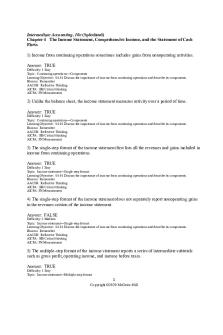
Spiceland 10e TB Chapter 04 Final
- 105 Pages

Spilker TIBE 10e Ch08 SM v3
- 65 Pages
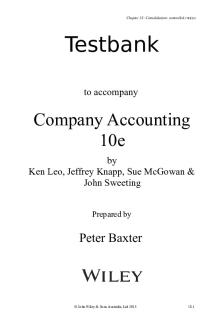
Ch18 tb leo 10e - Ch18 tb leo 10e
- 16 Pages
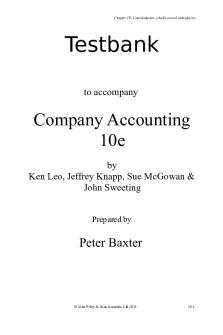
Ch19 tb leo 10e - Ch19 tb leo 10e
- 17 Pages
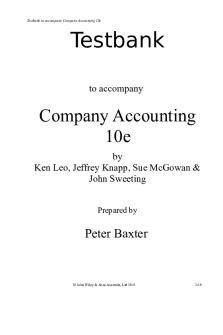
Ch24 tb leo 10e - Ch24 tb leo 10e
- 15 Pages
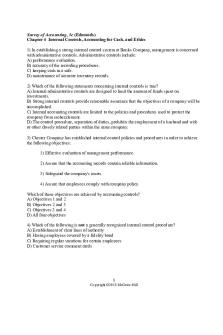
Edmonds 5e Chapter 04 TB
- 14 Pages
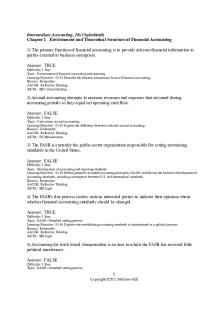
Spiceland 10e TB Chapter 01 Final
- 51 Pages
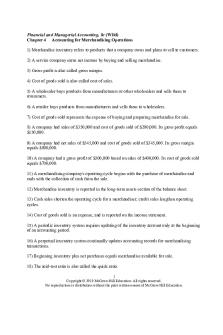
Wild8e chapter 04 tb - Notes
- 63 Pages

04 horng acct11c tb 04
- 106 Pages
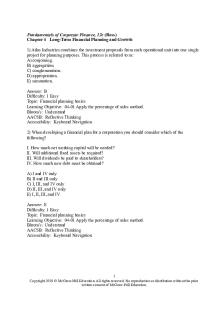
Ross12e Chapter 04 TB Answer Key
- 56 Pages
Popular Institutions
- Tinajero National High School - Annex
- Politeknik Caltex Riau
- Yokohama City University
- SGT University
- University of Al-Qadisiyah
- Divine Word College of Vigan
- Techniek College Rotterdam
- Universidade de Santiago
- Universiti Teknologi MARA Cawangan Johor Kampus Pasir Gudang
- Poltekkes Kemenkes Yogyakarta
- Baguio City National High School
- Colegio san marcos
- preparatoria uno
- Centro de Bachillerato Tecnológico Industrial y de Servicios No. 107
- Dalian Maritime University
- Quang Trung Secondary School
- Colegio Tecnológico en Informática
- Corporación Regional de Educación Superior
- Grupo CEDVA
- Dar Al Uloom University
- Centro de Estudios Preuniversitarios de la Universidad Nacional de Ingeniería
- 上智大学
- Aakash International School, Nuna Majara
- San Felipe Neri Catholic School
- Kang Chiao International School - New Taipei City
- Misamis Occidental National High School
- Institución Educativa Escuela Normal Juan Ladrilleros
- Kolehiyo ng Pantukan
- Batanes State College
- Instituto Continental
- Sekolah Menengah Kejuruan Kesehatan Kaltara (Tarakan)
- Colegio de La Inmaculada Concepcion - Cebu
